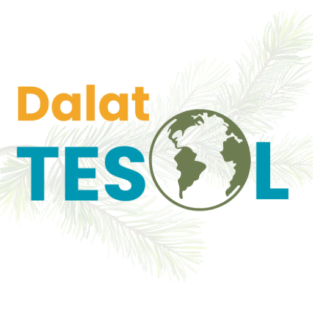By DalatTESOL
✈️ Language on the Move
Today’s language learners are not just memorizing vocabulary or practicing grammar. They’re navigating global cities, messaging across cultures, studying abroad, and increasingly, interacting with AI tools like ChatGPT.
In this world of movement, language itself becomes mobile—flexible, hybrid, and deeply personal.
If intercultural communication once meant “understanding different cultures,” today it often means living between languages, switching styles, and constantly adapting. This is where the concept of translanguaging becomes a powerful lens.
🔄 What Is Translanguaging?
Coined by Welsh scholar Cen Williams and expanded by García and Wei (2014), translanguaging refers to how multilingual speakers draw on their full linguistic resources—not as separate language systems, but as one integrated repertoire.
It’s not just about switching between English and Vietnamese. It’s about using all the tools one has—tones, dialects, body language, borrowed phrases, and even emojis—to make meaning and connect with others.
Translanguaging recognizes:
- Multilingual practices are natural, not a problem to fix.
- Language use is shaped by context, identity, and purpose.
- Communication is always negotiated, especially across cultural borders.
🇻🇳 A Vietnamese High School Example
In an English class in Da Nang, a student gives a presentation on climate change. She starts in English, but when she struggles to explain a local farming practice, she switches briefly to Vietnamese:
“Cái này giống như mùa hạn năm ngoái—chị em ở quê em cũng bị mất hết vụ luôn á.”
Then she pauses and rephrases in English:
“That was like last year’s drought—my sister lost the whole crop.”
The teacher smiles and nods. The class gets it.
She’s not code-switching randomly—she’s building understanding.
This is translanguaging in action: meaning-making that’s fluid, authentic, and rooted in lived experience.
👥 Mobile Identities and the Multilingual Self
When students study abroad or learn languages online, they don’t just learn words—they reshape their sense of self.
A Vietnamese MA TESOL student in the UK might begin to:
- Speak more directly in discussions
- Use humor differently
- Feel less confident in academic writing, but more empowered in oral debates
- Reflect critically on Vietnamese norms around silence, seniority, and formality
These shifts don’t mean she’s losing her identity. They show she’s negotiating a mobile, hybrid identity—moving between cultural expectations, sometimes even feeling “in-between.”
This fluidity is not weakness. It’s intercultural resilience.
🤖 Interculturality and AI: A New Frontier
Enter AI tools like ChatGPT.
A Vietnamese student learning to write academic essays might use ChatGPT to:
- Generate ideas
- Rephrase sentences
- Ask questions in English she’s too shy to ask a teacher
But she may also notice:
- The AI doesn’t understand Vietnamese-specific cultural references
- It suggests phrases that feel too blunt or too formal for her context
- It reflects Western academic norms about argument, clarity, and structure
This is a new kind of intercultural negotiation: not with people, but with technologies trained on dominant discourses.
Students must learn to critically filter AI-generated content, recognizing that even digital tools come with cultural assumptions.
💬 A Café Conversation in Hanoi
Picture this: a group of returnee Vietnamese scholars, back from graduate programs in Australia, the US, and Japan, meet for coffee. They speak a mix of Vietnamese and English.
“Lúc tao ở Melbourne á, tao không dám nói nhiều lúc đầu luôn á…”
“Yeah same, but my supervisor was super chill—he told me, ‘Don’t worry about your accent.’ That helped a lot.”
“Còn tao thì struggle với cái academic writing style của tụi nó.”
They are not showing off. They’re processing their experiences, navigating belonging, and supporting each other in a shared, fluid linguistic space.
🧠 Why It Matters for Intercultural Communication
All of this pushes us to rethink traditional views of culture and language.
Old view:
Culture is fixed. Language learners adapt to the target norms.
New view:
Culture is fluid. Communication is co-constructed. Languages mix and shift based on context and identity.
In the future of TESOL and applied linguistics, we need to:
- Validate multilingual realities
- Encourage critical awareness of power and normativity
- Support learners’ full linguistic repertoires, including their creativity and emotional expression
📚 Suggested Readings
- García, O., & Wei, L. (2014). Translanguaging: Language, Bilingualism and Education
- Jackson, J. (2019). Interculturality in International Education
- Canagarajah, S. (2013). Translingual Practice: Global Englishes and Cosmopolitan Relations
- Pennycook, A. (2007). Global Englishes and Transcultural Flows
🪞 Final Thought
In the world we’re entering—multilingual, digital, mobile—intercultural communication is not about mastering “the other.” It’s about becoming more flexible, more reflective, and more human.
Translanguaging shows us that language is not just a system of rules. It’s a resource for building bridges, expressing identity, and creating shared futures—across borders, screens, and generations.
We don’t just cross languages.
We cross into each other’s worlds.
